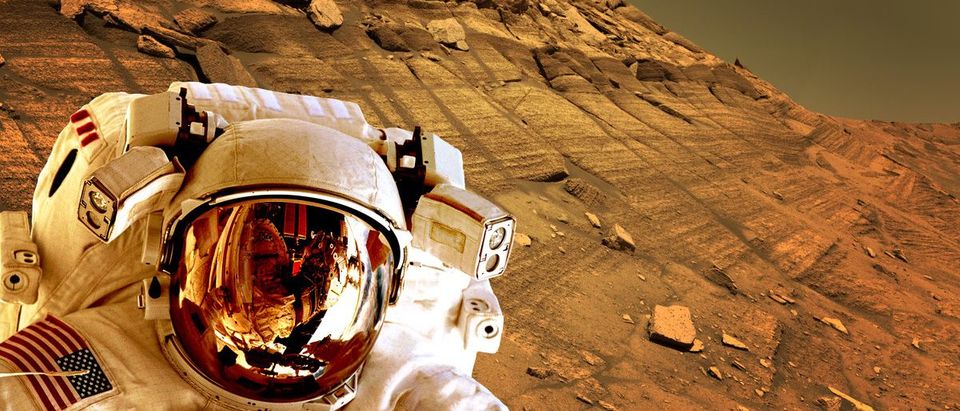A panel of NASA officials and contractors agreed President Donald Trump’s plan to send humans to Mars by 2033 was “achievable.”
“Within reasonable budgets Mars is achievable from an affordability perspective,” Bret Drake, a space mission architect at The Aerospace Corporation and former chief architect for human spaceflight at NASA, said during a Wednesday panel discussion at the Humans To Mars 2017 conference in Washington D.C.
“Basically Mars is achievable,” Drake said. “There are a series of ‘long poles’ we need to advance, but there really aren’t any serious showstoppers with the proper focus and the proper funding … humans to Mars in the mid 2030s are really achievable.”
Drake said a combination of private sector and NASA funding could develop the technology needed for humans to live and work on Mars.
WATCH:
Buzz Aldrin, the second man to walk on the moon, also attended the conference. On Tuesday, Aldrin outlined his plan to send humans to orbit Mars by 2020.
“I think we can send a very early version to an asteroid,” Aldrin said at the conference. “And they can do that in 2020 and get back here after the election of 2020. At least there’s an achievement of sorts that can be demonstrated … we’ll probably have to use SpaceX Dragons or New Glenn [Blue Origin’s rocket]. That’s what we’re gonna need to do to do these things.”
The Trump administration wants to send a manned mission to the moon in 2019, and then a manned mission to Mars in 2033.
The president vowed to “unlock the mysteries of space” in his inaugural address, fueling speculation he discussed sending humans to Mars in a private meeting with billionaire Elon Musk who heads the company SpaceX.
Landing on Mars would be a massive achievement, but experts say a lot of technical problems must be overcome before we can get there.
For starters, a Mars-bound spacecraft would need massive amounts of energy to make the trip there and back. Astronauts would also need energy to manufacture rocket fuel on the Red Planet for their return.
“NASA needs to focus on a big stationary power source,” Lee Mason, NASA’s principal technologist for power and energy storage, said at the conference. “I’m very excited about a technology we’re pursuing called Kilopower, its a small fission reactor … this is really the first time that NASA has seriously developed a reactor for space applications.”
Powering a manned Mars base with solar power would be problematic, according to Mason. The Red Planet gets far less sunlight than Earth due to dust storms and its greater distance from the Sun. Mason said wind power on Mars wasn’t realistic either.
Aside from energy, astronauts would need life support systems to keep them alive and nourished for years at a time.
“For these long duration habitation capability we have several key systems in testing,” Andrea Riley, a representative of NASA’s International Space Station (ISS) division, said during the panel. “We’re evolving the capabilities on ISS to develop the exploration class ecosystem. Will be doing a lot of testing on ISS.”
Riley said NASA will test key life-support systems on the ISS before sending astronauts to Mars.
“For example, for the radiation protection,” Riley said. “There’s a lot of radiation obviously in cis-lunar and in the Mars vicinity we think we can control the SPE [Solar particle event] by design by having some sort of a storm shelter.”
Send tips to andrew@
All content created by the Daily Caller News Foundation, an independent and nonpartisan newswire service, is available without charge to any legitimate news publisher that can provide a large audience. All republished articles must include our logo, our reporter’s byline and their DCNF affiliation. For any questions about our guidelines or partnering with us, please contact licensing@dailycallernewsfoundation.org.


